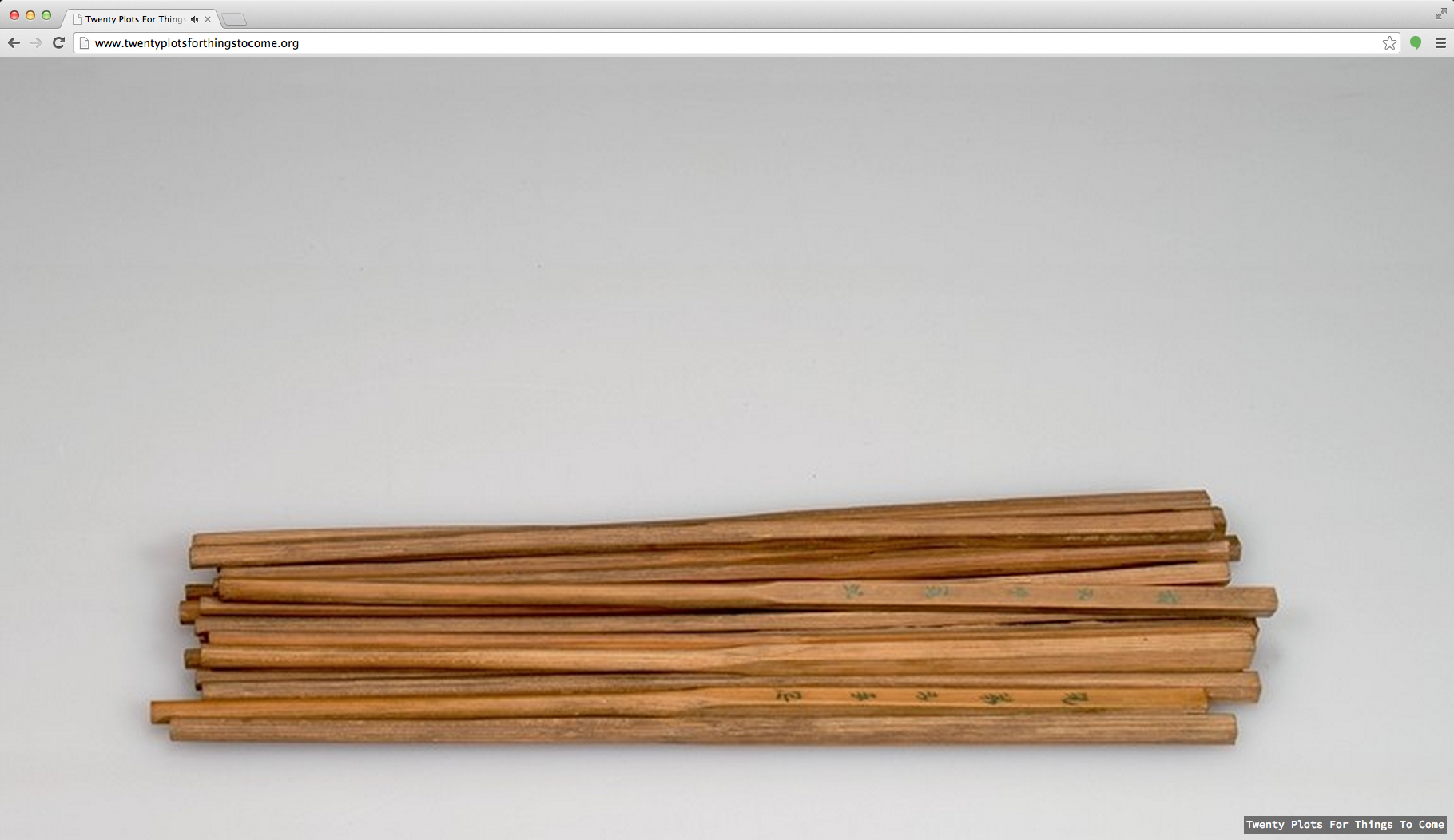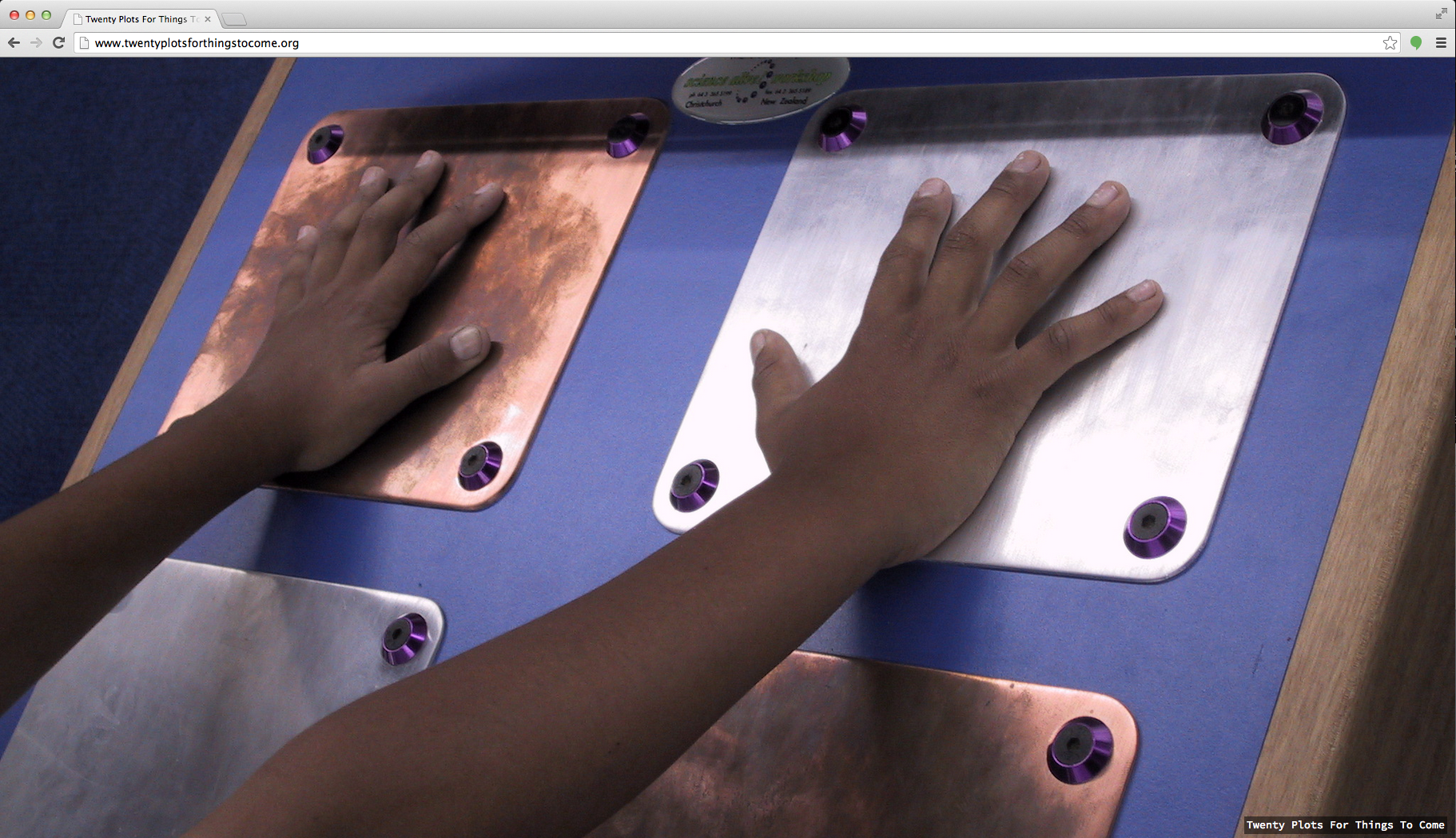Shows
Heman Chong and Anthony Marcellini’s “Twenty Plots for Things to Come”


Part Wunderkammer, part fever dream, Twenty Plots for Things to Come is an online experiential composition conceived by artists Heman Chong and Anthony Marcellini. Working together since 2005, their collaborations are thoughtful ruminations on the visual semantics of aesthetics, looking at how dialogue transforms and rewrites interactions between individuals and objects. In their previous project, “Interview(s)” (2012), the artists displayed odd and appealing found objects, tempting visitors to compile their own private lexicons of color and form. Accessible only online, Twenty Plots is the virtual abstraction of that exercise: its ephemeral visual bytes and narrative fragments invite surreal yet astute compositions. The artists have coded the essential data of life—materialism, love, conceit, violence, sexuality—within an infinite loop of dystopian dialogue.

Commissioned as part of the Yerba Buena Center for the Arts’ exhibition “Dissident Futures,” Twenty Plots is currently on view as a film projection in the exhibition hall. A smooth parade of thousands of disparate images is accompanied by narration. Its complexity is confounding: each artist wrote 10 fragmented scenarios without consulting the other—odd speculative “plots” that run as 20 separate audio tracks, each one or two minutes long and read dispassionately by voiceover actor Robert Pierson. Twenty tracks run at a time, randomized, so that they never play back in the same sequence.

Accompanying the 20 narratives are some 1,000 images chosen independently by each artist; these are linked to the photographic databases of over one hundred museum collections, and are each displayed onscreen for a few seconds each. Twenty Plots has the potential to run indefinitely, but the underlying conceit of the work is that these digital links will never be upgraded, and so the piece—along with its conceptual framework—will decay gradually over time.

The visuals are unpredictable and sometimes startling—rockets, old tools (or ancient torture devices?), vintage computers, tribal masks, solar flares, preserved fetuses—and they continue to change the timbre of the plots. In addition, despite their brevity, these fantastical narratives are charged with their own dense imagery. They describe dystopic societies and technologies, as alluring as they are dysfunctional—memory implants that lead to sadism, the prohibition of all sound, the unsuspected sentience of Earth, a pandemic of insomnia. The morphology of Twenty Plots recalls the videos of Saskia Olde Wolbers, whose weird poetic scripts ascribe meaning to abstract visuals. Conversely, every archived image in Twenty Plots provokes ever-shifting layers of insight into Chong’s and Marcellini’s futuristic reveries.

Watching Twenty Plots is both addictive and frustrating. Its mini-intrigues are so seductive that, when a tale ends abruptly, we’re bereft—and the brisk progression of images continues in silence until another impelling scenario pulls us in again. Twenty Plots captures the terror and grace of technology-in-the-name-of-progress, forcing us to negotiate the dissonance between what we see and what we hear: just as “images fail to correspond to our personal beliefs” (as one of the plots states), we struggle for coherence, but instead are immersed in plots of our own making. The artists speculate that, as the work deteriorates it will come to consist of only audio and dead links, or redirected pages: an infinite dialogue with raw data.
Twenty Plots for Things to Come is on view as part of “Dissident Futures,” at Yerba Buena Center for the Arts through January 26 and viewable online indefinitely.
Marybeth Stock is a writer, researcher and editor based in Singapore and Japan.







